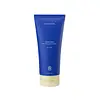What's inside
What's inside
 Benefits
Benefits

 Concerns
Concerns

No concerns
 Ingredients Side-by-side
Ingredients Side-by-side

Water
Skin ConditioningCaprylic/Capric Triglyceride
MaskingButyrospermum Parkii Butter
Skin ConditioningGlycerin
HumectantPolyglyceryl-3 Dicitrate/Stearate
EmulsifyingCetyl Alcohol
EmollientPhenylpropanol
MaskingMethylsilanol Mannuronate
Skin ConditioningInulin
Skin ConditioningXanthan Gum
EmulsifyingParfum
Masking1,2-Hexanediol
Skin ConditioningSodium Acrylates Copolymer
Lecithin
EmollientFructose
HumectantSodium Phytate
Linalool
PerfumingHexyl Cinnamal
PerfumingBenzyl Salicylate
PerfumingAlpha-Isomethyl Ionone
PerfumingEugenol
PerfumingPhenoxyethanol
PreservativeSorbic Acid
PreservativeAlcohol
AntimicrobialWater, Caprylic/Capric Triglyceride, Butyrospermum Parkii Butter, Glycerin, Polyglyceryl-3 Dicitrate/Stearate, Cetyl Alcohol, Phenylpropanol, Methylsilanol Mannuronate, Inulin, Xanthan Gum, Parfum, 1,2-Hexanediol, Sodium Acrylates Copolymer, Lecithin, Fructose, Sodium Phytate, Linalool, Hexyl Cinnamal, Benzyl Salicylate, Alpha-Isomethyl Ionone, Eugenol, Phenoxyethanol, Sorbic Acid, Alcohol
Water
Skin ConditioningGlycerin
HumectantPropanediol
SolventPentylene Glycol
Skin ConditioningXylitylglucoside
HumectantSodium Acrylates Copolymer
Lecithin
EmollientPanthenol
Skin ConditioningXylitol
HumectantGlucose
HumectantAnhydroxylitol
HumectantFructose
HumectantSodium Phytate
Squalane
EmollientDecyl Glucoside
CleansingInulin
Skin ConditioningXanthan Gum
EmulsifyingCellulose
AbsorbentIsopentyldiol
HumectantBetaine
HumectantCellulose Gum
Emulsion StabilisingHydroxyethyl Acrylate/Sodium Acryloyldimethyl Taurate Copolymer
Emulsion StabilisingC13-14 Alkane
SolventC15-23 Alkane
SolventPhenoxyethanol
PreservativeCitric Acid
BufferingWater, Glycerin, Propanediol, Pentylene Glycol, Xylitylglucoside, Sodium Acrylates Copolymer, Lecithin, Panthenol, Xylitol, Glucose, Anhydroxylitol, Fructose, Sodium Phytate, Squalane, Decyl Glucoside, Inulin, Xanthan Gum, Cellulose, Isopentyldiol, Betaine, Cellulose Gum, Hydroxyethyl Acrylate/Sodium Acryloyldimethyl Taurate Copolymer, C13-14 Alkane, C15-23 Alkane, Phenoxyethanol, Citric Acid
Ingredients Explained
These ingredients are found in both products.
Ingredients higher up in an ingredient list are typically present in a larger amount.
Glycerin is already naturally found in your skin. It helps moisturize and protect your skin.
A study from 2016 found glycerin to be more effective as a humectant than AHAs and hyaluronic acid.
As a humectant, it helps the skin stay hydrated by pulling moisture to your skin. The low molecular weight of glycerin allows it to pull moisture into the deeper layers of your skin.
Hydrated skin improves your skin barrier; Your skin barrier helps protect against irritants and bacteria.
Glycerin has also been found to have antimicrobial and antiviral properties. Due to these properties, glycerin is often used in wound and burn treatments.
In cosmetics, glycerin is usually derived from plants such as soybean or palm. However, it can also be sourced from animals, such as tallow or animal fat.
This ingredient is organic, colorless, odorless, and non-toxic.
Glycerin is the name for this ingredient in American English. British English uses Glycerol/Glycerine.
Learn more about GlycerinInulin is a polysaccharide (carbohydrate) with prebiotic and antioxidant properties.
The majority of inulin is extracted from chicory, but can also be obtained from other plants such as garlic, onion, asparagus, and sugarcane.
Studies show inulin may help with controlling your skin's natural microbiota when applied topically.
The antioxidant potential of inulin varies depending on the source.
Learn more about InulinLecithin is a term for a group of substances found in the cell membranes of plants, animals, and humans. They are made up of mixture of phospholipids.
This ingredient has emollient and emulsifying properties.
As an emollient, lecithen helps soften the skin and creates a barrier to keep moisture in.
As an emulsifier, it also helps prevent water and oil ingredients from separating. Lecithin can also help ingredients be better absorbed by the skin.
This is because the phospholipids in lecithin produce liposomes. Liposomes help other ingredients get through the skin barrier.
Depending on the source of this ingredient, lecithin may not be fungal acne safe. This is because some sources of lecithin come from soybean oil, which may feed the malassezia yeast that feeds fungal acne.
We recommend reaching out to the brand you are purchasing from to inquire about the source of their lecithin.
Some other names for this ingredient include soy lecithin and deoiled soy lecithin.
Learn more about LecithinPhenoxyethanol is a preservative that has germicide, antimicrobial, and aromatic properties. Studies show that phenoxyethanol can prevent microbial growth. By itself, it has a scent that is similar to that of a rose.
It's often used in formulations along with Caprylyl Glycol to preserve the shelf life of products.
We don't have a description for Sodium Acrylates Copolymer yet.
Sodium Phytate is the synthetic salt form of phytic acid. Phytic acid is an antioxidant and can be found in plant seeds.
Sodium Phytate is a chelating agent. Chelating agents help prevent metals from binding to water. This helps stabilize the ingredients and the product.
Water. It's the most common cosmetic ingredient of all. You'll usually see it at the top of ingredient lists, meaning that it makes up the largest part of the product.
So why is it so popular? Water most often acts as a solvent - this means that it helps dissolve other ingredients into the formulation.
You'll also recognize water as that liquid we all need to stay alive. If you see this, drink a glass of water. Stay hydrated!
Learn more about WaterXanthan gum is used as a stabilizer and thickener within cosmetic products. It helps give products a sticky, thick feeling - preventing them from being too runny.
On the technical side of things, xanthan gum is a polysaccharide - a combination consisting of multiple sugar molecules bonded together.
Xanthan gum is a pretty common and great ingredient. It is a natural, non-toxic, non-irritating ingredient that is also commonly used in food products.
Learn more about Xanthan Gum